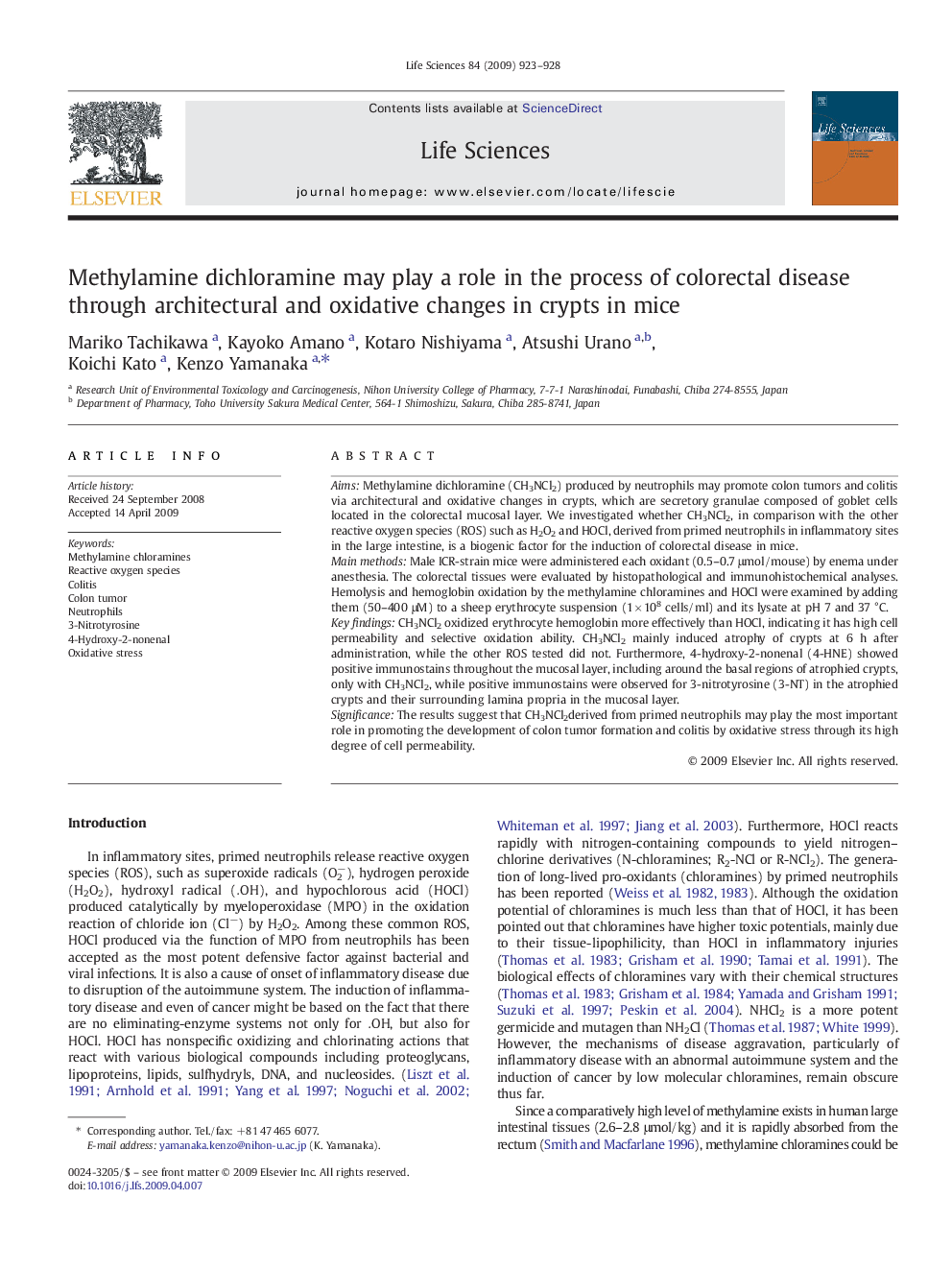| Article ID | Journal | Published Year | Pages | File Type |
|---|---|---|---|---|
| 2552792 | Life Sciences | 2009 | 6 Pages |
AimsMethylamine dichloramine (CH3NCl2) produced by neutrophils may promote colon tumors and colitis via architectural and oxidative changes in crypts, which are secretory granulae composed of goblet cells located in the colorectal mucosal layer. We investigated whether CH3NCl2, in comparison with the other reactive oxygen species (ROS) such as H2O2 and HOCl, derived from primed neutrophils in inflammatory sites in the large intestine, is a biogenic factor for the induction of colorectal disease in mice.Main methodsMale ICR-strain mice were administered each oxidant (0.5–0.7 μmol/mouse) by enema under anesthesia. The colorectal tissues were evaluated by histopathological and immunohistochemical analyses. Hemolysis and hemoglobin oxidation by the methylamine chloramines and HOCl were examined by adding them (50–400 μM) to a sheep erythrocyte suspension (1 × 108 cells/ml) and its lysate at pH 7 and 37 °C.Key findingsCH3NCl2 oxidized erythrocyte hemoglobin more effectively than HOCl, indicating it has high cell permeability and selective oxidation ability. CH3NCl2 mainly induced atrophy of crypts at 6 h after administration, while the other ROS tested did not. Furthermore, 4-hydroxy-2-nonenal (4-HNE) showed positive immunostains throughout the mucosal layer, including around the basal regions of atrophied crypts, only with CH3NCl2, while positive immunostains were observed for 3-nitrotyrosine (3-NT) in the atrophied crypts and their surrounding lamina propria in the mucosal layer.SignificanceThe results suggest that CH3NCl2derived from primed neutrophils may play the most important role in promoting the development of colon tumor formation and colitis by oxidative stress through its high degree of cell permeability.
